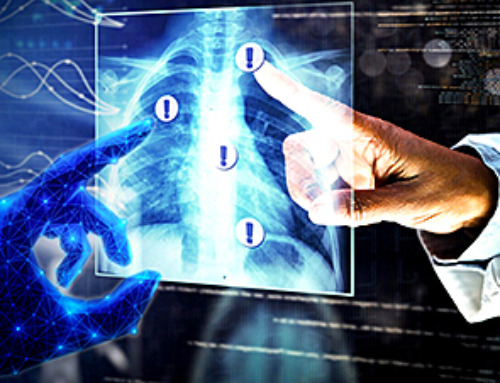Discover how a new epigenetic clock measures how fast you are really aging from just a drop of blood or saliva.
A recent study published in the journal Nature Aging constructed an intrinsic capacity (IC) clock to predict all-cause mortality based on different factors.
What is intrinsic capacity?
In 2015, the World Health Organization (WHO) introduced intrinsic capacity (IC), a crucial component of healthy aging. WHO defined IC as “the sum of all the physical and mental capacities that an individual can draw on at any point in their life.”
IC promotes healthy aging by shifting the conventional focus of treating acute diseases to assessing and preserving an individual’s functional ability. It is essential to note that IC varies among individuals, typically peaking in early childhood and gradually decreasing after midlife. However, IC can be improved at any age by altering lifestyle.
The International Classification of Diseases, 11th Revision, has recently standardized the clinical use of IC as a functional aging metric. To date, several studies have developed IC scores, where a low IC score is associated with higher comorbidity, difficulties in daily activities, frailty, and increased falls. These studies have also established a link between IC and health-related factors.
Although IC can efficiently measure functional ability, the current protocol for quantitative measure is highly complex and requires sophisticated equipment and trained personnel. In addition, the precise molecular and cellular mechanisms associated with the age-related decline in IC is unclear.
About the study
The current study aimed to construct a new epigenetic predictor of IC (IC clock) using data from the INSPIRE Translational (INSPIRE-T) cohort. This cohort is an ongoing 10-year follow-up study that evaluates IC changes and biomarkers of aging and age-related diseases. Its participants are aged between 20 and 102 with varied levels of functional capacity.
DNA methylation (DNAm) profiling was performed on more than 1000 participants in the INSPIRE-T cohort. DNAm beta values and IC scores were used to build a predictive model for IC, using elastic net regression and tenfold cross-validation.
The IC clock was applied to the Framingham Heart Study (FHS) to uncover how DNAm IC was associated with mortality, clinical markers of health, and lifestyle.
Transcriptomics data and changes in cell composition were considered to assess the molecular and cellular mechanisms of IC.
Study findings
Clinical assessment tools were used to develop IC scores (ranging from 0 to 1) representing an age-related decline in different domains, such as sensory, cognition, psychological, locomotion, and vitality. An IC score of 1 indicated the best health outcome, while a zero score indicated the worst outcome.
All studied IC domains were found to be negatively correlated with age. The current study revealed that males had higher IC scores in the psychological and vitality domains, while females had higher scores in the sensory domain. No differences were observed between the sexes in the cognition and locomotion domains.
A continuous two-phase model regression analysis showed that female participants undergo an earlier sensory decline, while male participants experience earlier cognitive decline. This finding implies that women maintain cognitive functions like thinking, remembering, and reasoning longer than men.
The overall IC score indicated a robust positive correlation with each domain, compared to the correlations between domains, highlighting the integrative nature of the IC score. The highest and lowest inter-domain correlations were found in the sensory and psychological domains, respectively.
The model that ranked best across all studied metrics, i.e., highest correlation, lowest error, and fewer cytosine-phosphate-guanine (CpG) sites, exhibited a correlation of 0.61 between IC and predicted values based on DNAm. Although a strong correlation was observed based on age, CpGs with the highest coefficients exhibited nearly zero correlation with chronological age.
The newly constructed IC clock was compared with first- and second-generation epigenetic clocks. A negative correlation between DNAm IC and the epigenetic clocks was observed, with PhenoAge revealing the strongest correlation, followed by the Hannum clock. The current study indicated that DNAm IC could be calculated from saliva and blood samples.
The current study also identified the expression of 578 genes (e.g., MCOLN2 and CD28 genes) as significantly associated with DNAm IC alterations. CpGs in the IC clock indicated a correlation of 0.21 with the expression of at least one associated considerably gene. This observation confirmed the robust connection between the IC clock and the identified gene expression signature of DNAm IC.
Gene Ontology (GO) enrichment analysis was performed to determine the biological processes associated with the gene expression signature of DNAm IC. IC expression signature was strongly enriched in genes involved in cellular senescence and chronic inflammation. IC clock detected various aspects of immunosenescence in the blood linked with functional immune aging changes.
The current study observed that genomic instability, mitochondrial dysfunction, and loss of proteostasis were linked to the function of specific IC domains. Higher vitality scores were associated with mitochondrial electron transport genes. In comparison, higher psychological scores were related to DNA damage response pathways and higher sensory scores with proteostasis and immune response pathways.
Mortality data from the 1,680 individuals in the FHS was used to determine whether DNAm IC was associated with an increased mortality risk from all causes or age-related conditions. DNAm IC was found to be more strongly associated with all-cause mortality risks. This study estimated that individuals with high DNAm IC would live, on average, 5.5 years longer than those with low DNAm IC.
Notably, this study indicated that consuming fish rich in long-chain omega-3 fatty acids and adhering to the recommended sugar levels could promote IC maintenance. Although a range of dietary factors were examined, only fish-derived omega-3s and adherence to sugar guidelines remained significant after adjusting for multiple tests.
The researchers also note that IC declines rapidly in very old age. Due to limited data in this age group, their predictive model is not as strong for individuals with extremely low IC scores.
In addition, whilst the IC clock is strongly associated with mortality and health outcomes, the study cannot establish that improving DNAm IC will necessarily cause better health outcomes or longer life.
Conclusions
The current study established a biological clock for age-related decline in IC based on multiple clinical, functional, immune, and inflammatory components and lifestyle choices.
This IC clock can be estimated from blood and saliva and outperforms established epigenetic clocks in predicting mortality risk. However, further research is required to clarify causal relationships and to validate the IC clock in more diverse populations and among those with very low functional capacity.
A person’s IC can be exploited to guide aging interventions, though these results should be interpreted considering the study’s limitations and the need for further validation.
News
Researchers propose five key questions for effective adoption of AI in clinical practice
While Artificial Intelligence (AI) can be a powerful tool that physicians can use to help diagnose their patients and has great potential to improve accuracy, efficiency and patient safety, it has its drawbacks. It [...]
Advancements and clinical translation of intelligent nanodrugs for breast cancer treatment
A comprehensive review in "Biofunct. Mater." meticulously details the most recent advancements and clinical translation of intelligent nanodrugs for breast cancer treatment. This paper presents an exhaustive overview of subtype-specific nanostrategies, the clinical benefits [...]
It’s Not “All in Your Head”: Scientists Develop Revolutionary Blood Test for Chronic Fatigue Syndrome
A 96% accurate blood test for ME/CFS could transform diagnosis and pave the way for future long COVID detection. Researchers from the University of East Anglia and Oxford Biodynamics have created a highly accurate [...]
How Far Can the Body Go? Scientists Find the Ultimate Limit of Human Endurance
Even the most elite endurance athletes can’t outrun biology. A new study finds that humans hit a metabolic ceiling at about 2.5 times their resting energy burn. When ultra-runners take on races that last [...]
World’s Rivers “Overdosing” on Human Antibiotics, Study Finds
Researchers estimate that approximately 8,500 tons of antibiotics enter river systems each year after passing through the human body and wastewater treatment processes. Rivers spanning millions of kilometers across the globe are contaminated with [...]
Yale Scientists Solve a Century-Old Brain Wave Mystery
Yale scientists traced gamma brain waves to thalamus-cortex interactions. The discovery could reveal how brain rhythms shape perception and disease. For more than a century, scientists have observed rhythmic waves of synchronized neuronal activity [...]
Can introducing peanuts early prevent allergies? Real-world data confirms it helps
New evidence from a large U.S. primary care network shows that early peanut introduction, endorsed in 2015 and 2017 guidelines, was followed by a marked decline in clinician-diagnosed peanut and overall food allergies among [...]
Nanoparticle blueprints reveal path to smarter medicines
Lipid nanoparticles (LNPs) are the delivery vehicles of modern medicine, carrying cancer drugs, gene therapies and vaccines into cells. Until recently, many scientists assumed that all LNPs followed more or less the same blueprint, [...]
How nanomedicine and AI are teaming up to tackle neurodegenerative diseases
When I first realized the scale of the challenge posed by neurodegenerative diseases, such as Alzheimer's, Parkinson's disease and amyotrophic lateral sclerosis (ALS), I felt simultaneously humbled and motivated. These disorders are not caused [...]
Self-Organizing Light Could Transform Computing and Communications
USC engineers have demonstrated a new kind of optical device that lets light organize its own route using the principles of thermodynamics. Instead of relying on switches or digital control, the light finds its own [...]
Groundbreaking New Way of Measuring Blood Pressure Could Save Thousands of Lives
A new method that improves the accuracy of interpreting blood pressure measurements taken at the ankle could be vital for individuals who are unable to have their blood pressure measured on the arm. A newly developed [...]
Scientist tackles key roadblock for AI in drug discovery
The drug development pipeline is a costly and lengthy process. Identifying high-quality "hit" compounds—those with high potency, selectivity, and favorable metabolic properties—at the earliest stages is important for reducing cost and accelerating the path [...]
Nanoplastics with environmental coatings can sneak past the skin’s defenses
Plastic is ubiquitous in the modern world, and it's notorious for taking a long time to completely break down in the environment - if it ever does. But even without breaking down completely, plastic [...]
Chernobyl scientists discover black fungus feeding on deadly radiation
It looks pretty sinister, but it might actually be incredibly helpful When reactor number four in Chernobyl exploded, it triggered the worst nuclear disaster in history, one which the surrounding area still has not [...]
Long COVID Is Taking A Silent Toll On Mental Health, Here’s What Experts Say
Months after recovering from COVID-19, many people continue to feel unwell. They speak of exhaustion that doesn’t fade, difficulty breathing, or an unsettling mental haze. What’s becoming increasingly clear is that recovery from the [...]
Study Delivers Cancer Drugs Directly to the Tumor Nucleus
A new peptide-based nanotube treatment sneaks chemo into drug-resistant cancer cells, providing a unique workaround to one of oncology’s toughest hurdles. CiQUS researchers have developed a novel molecular strategy that allows a chemotherapy drug to [...]





















